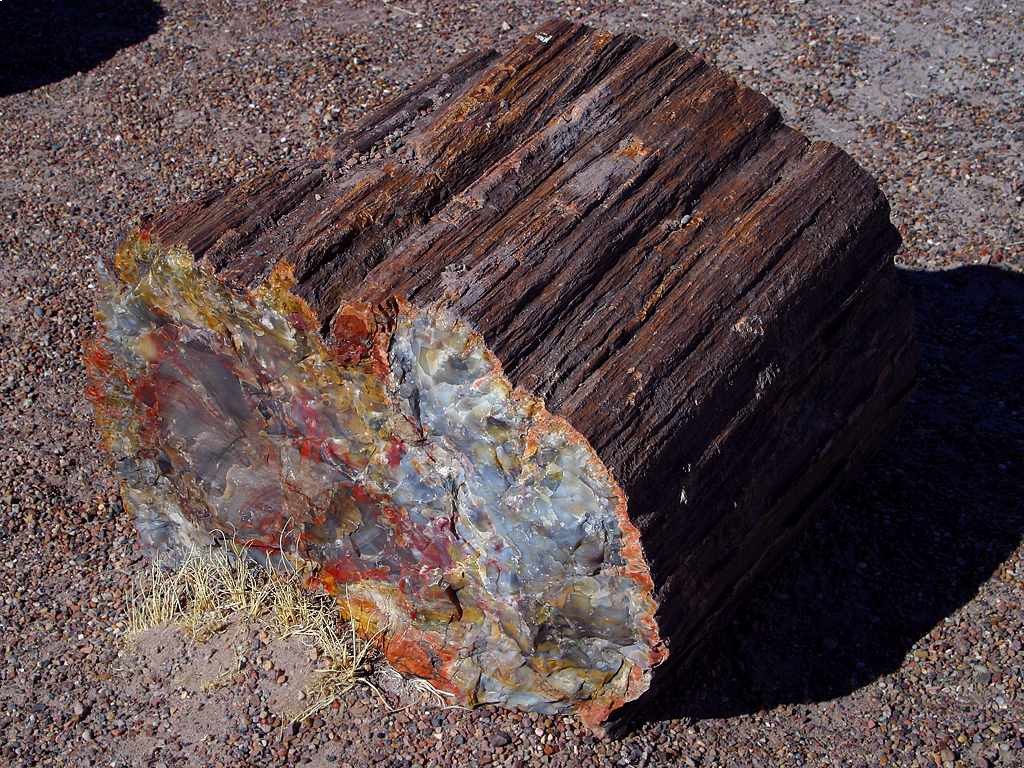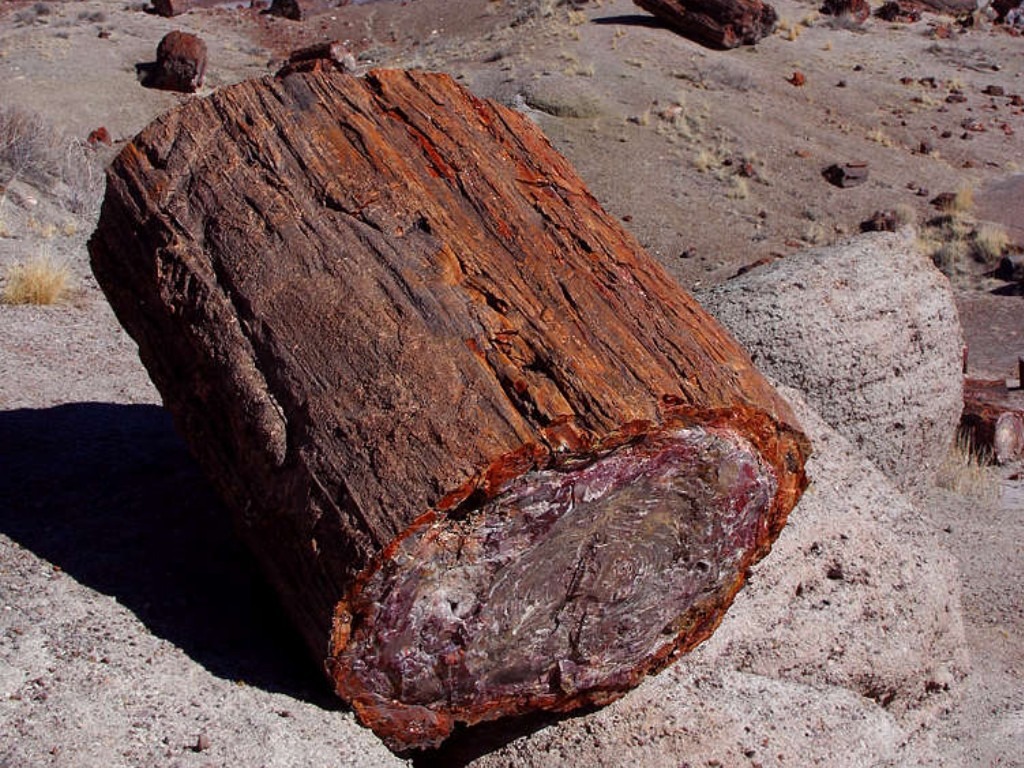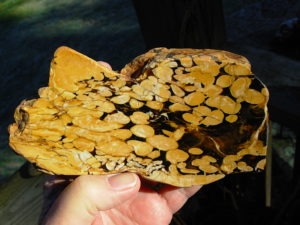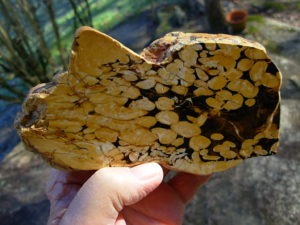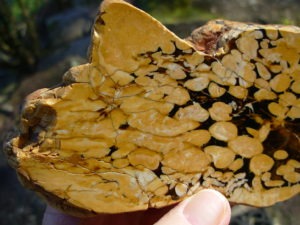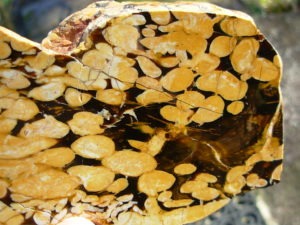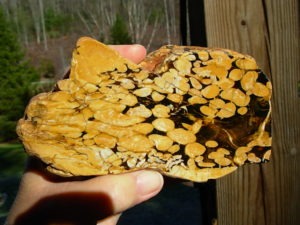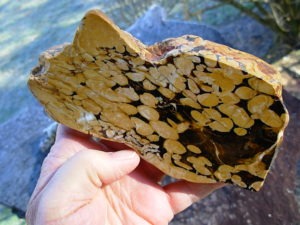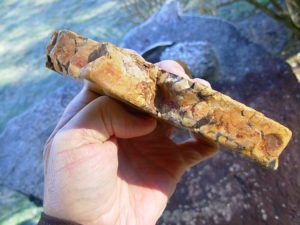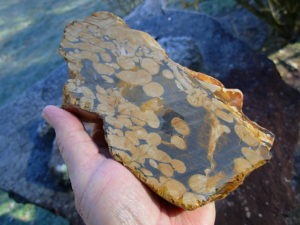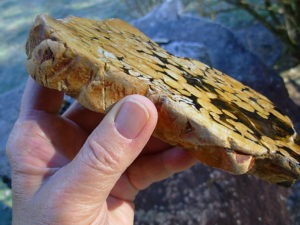Petrified Wood
Petrified Wood is actually wood that has been turned into stone by a Geologic process called petrification (or petrifaction). It may be beautifully colored by chemical impurities such as iron and copper. Petrification takes place through a combination of two similar processes called permineralization and replacement. Minerals either fill all of the pores and cavities of the organic matter (permineralization), or mineral bearing water dissolves the original organic material and replaces it with mineral matter (replacement). The minerals form a perfect copy of the original substance, including cell structure and fibers. The replacement mineral is usually a variety of quartz, chalcedony, opal, calcite, or carnotite. These processes can replicate the original specimen down to the microscopic level.
There are two common types of permineralization, they are silicification and pyritization. Silicification is the process in which organic matter becomes saturated with silica. Silicification generally occurs in two environments. The specimen may have been buried in sediments of deltas and flood plains, or the specimen may have been buried in volcanic ash. The process begins when a specimen is saturated with a silica bearing water. The cell walls of the specimen are eventually dissolved and silica is deposited into the empty spaces. This is the process that makes Petrified Wood. The cellulose and lignin (two components of wood) are degraded and replaced with silica. The specimen is then transformed to stone in a process called lithification (a process whereby freshly deposited loose grains of sediment are converted into rock) as water is lost.
Pyritization is a process similar to silicification, but instead of silica, this process involves the deposits of iron and sulfur in the pores and cavities of an organism. This process is what forms Pyritized Ammonites
Replacement is the second process involved in petrification. Replacement occurs when mineral bearing water dissolves the original solid material of an organism and replaces them with minerals. This process is extremely slow, but results in the replication of the microscopic structure of the organism. The slower this process is, the better defined the microscopic structure will be. The minerals commonly involved in replacement are calcite, silica, pyrite, and hematite. It is rare to find organisms preserved by replacement alone, but these specimens can be extremely detailed. Most petrification occurs with replacement in combination with permineralization.
The rate at which petrifaction occurs is not exactly known. Most petrified wood was formed long ago. Stone logs in Petrified Forest National Park, Arizona, are of the Triassic Period and more than 160,000,000 years old. Petrified forests were formed in different geologic periods. The trees in each one represent the species that grew during the period of its formation. The oldest Petrified Forest in the United States that we know of is the Devonian trees near Gilboa, New York. There are amazing areas of petrified wood in Yellowstone National Park, including a few very rare upright fossilized tree trunks. Gingko Petrified Forest is a state park in Washington. Deposits of petrified wood have also been found in California, New Mexico, and Utah. Our favorite to visit is still the Petrified Forest National Park, Arizona! Here is a link to their website...
http://www.americansouthwest.net/arizona/petrified_forest/national_park.html
Here are some youtube Links we think you might find interesting to watch!
Petrified Forest National Park, Arizona
https://www.youtube.com/watch?v=8wIjwFHiYJE
Video 1409 of a reality travel show with your host David Rush. Go to www.davidrush.net
Petrified Wood - 15 million-year-old Petrified Tree
https://www.youtube.com/watch?v=FlMmgglxCss
Geologist describes process that turned 15 million-year-old logs to stone near Vantage, Washington.
http://hugefloods.com/ presents "2 Minute Geology" episode that tells the story of logs protected from lava by lake water. Today the beautiful petrified logs are on display at Ginkgo Petrified Forest State Park
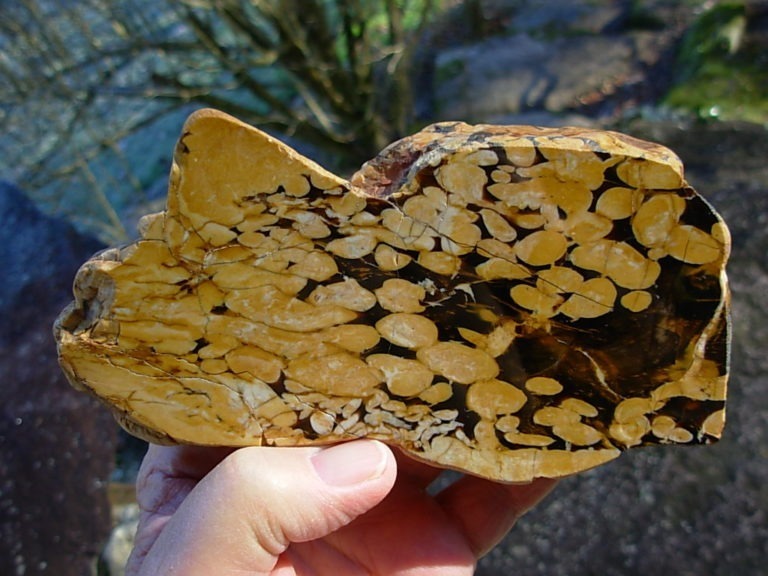
Peanut Wood is a “Petrified Wood” but it is not a land based Petrified Wood like you might find in Arizona. This petrification process started when wood was swept into the ocean. The ocean washed and eroded the wood making it into something like driftwood that you might find on a beach today. While floating in the ocean, this driftwood was invaded by a breed of mollusks named Teredo (commonly called “Shipworms”). They are notorious for boring into and often destroying wood that is immersed in sea water. Structures like wooden piers, docks and wood hull ships are often destroyed by these “termites of the sea” that tunnel with a pair of very small shells they have at one end. This tunneling is often described as “rasping their way through the wood”. The wood gets heavier as it gets waterlogged and is filled with these shipworms and eventually settles to the bottom of the ocean where the bore holes become filled with layers of whitish-tan colored mud and sediment and quartz petrification occurs. It is believed that these stones are around 120 million years old. The name Peanut Wood was given to the petrified wood because the lightly colored boreholes resemble peanuts in a coffee or toffee brown quartz petrification. This petrified wood is often referred to as a gemstone because the solid quartz petrification lends itself to making excellent cabochons. It is found along the edges of the Kennedy Ranges about 100 miles inland from the coastal town of Carnarvon, Western Australia.
Item# PW12159993
1.23 lb Polished Face Thick Peanut Wood DisplaySlab

Whitish background is natural...it was frosty outside today!
This exceptional and extra large specimen of Peanut Wood from Australia has been in our personal collection since around 1995. It was procured from a mineral dealer in Deming New Mexico. It is a nice slab just shy if 1 inch thick. It can be kept as a display slab or cut into more slabs or cabochon stock. This piece has natural faults typical of this material. Takes an excellent polish.
This slab weighs 19.8 oz or 1.23 lb (561 grams) and measures approximately 3.1 x 3.2 x 0.96" (15.7 x 8.3 x 2.44 cm)

